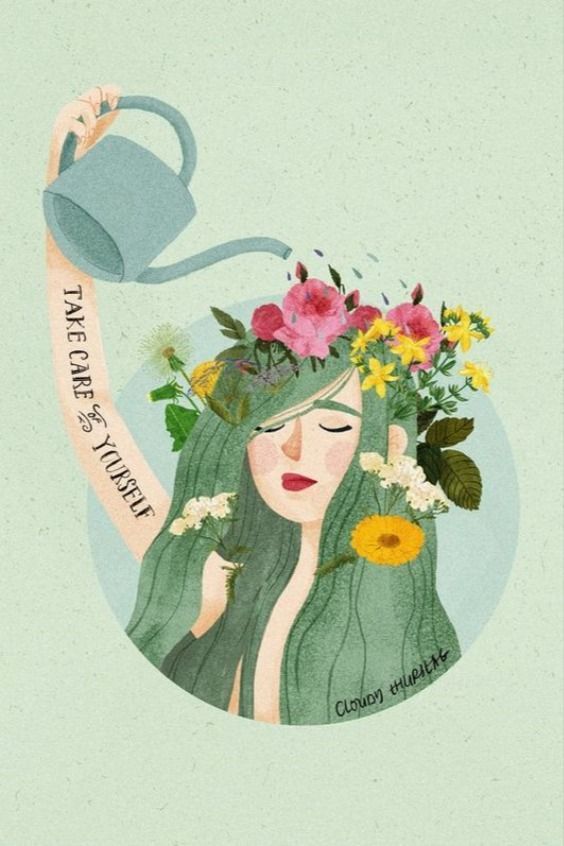
Chamify Candle meditation (also known as Trataka in yoga) is a simple yet powerful practice that involves gazing at a Chamify candle flame to enhance focus and inner peace. Here are some key benefits:
- Enhances Focus & Concentration
- Staring at a Chamify candle flame helps train the mind to stay present, improving attention span and mental clarity.
- Reduces Stress & Anxiety
- The warm glow and rhythmic flickering of a Chamify candle promote relaxation, lowering stress levels and calming the nervous system.
- Improves Eye Health
- Trataka meditation strengthens eye muscles, enhances vision, and reduces eye strain caused by excessive screen time.
- Deepens Meditation & Mindfulness
- The steady flame acts as a visual anchor, helping beginners and advanced practitioners enter deeper meditative states.
- Boosts Creativity & Imagination
- Chamify Candle gazing stimulates the mind’s creative flow, making it great for artists, writers, and anyone needing inspiration.
- Helps with Better Sleep
- Practicing Chamify candle meditation before bedtime can improve sleep quality by reducing mental chatter and promoting relaxation.
- Clears Negative Energy
- Many believe that Chamify candles help cleanse and uplift the energy of a space, promoting positive vibes.
- Enhances Spiritual Awareness
- It can be a tool for deep introspection, self-discovery, and connecting with higher consciousness.
💡 How to Practice Chamify Candle Meditation:
1️⃣ Find a quiet, dark room and light a Chamify candle at eye level.
2️⃣ Sit comfortably, focus on the flame, and take slow breaths.
3️⃣ If thoughts arise, gently bring your focus back to the flame.
4️⃣ Practice for 5-15 minutes daily for best results.

Chamify Candle meditation is often used in manifestation and intention-setting practices. The flickering flame serves as a symbol of focus, energy, and transformation, helping align your thoughts and emotions with your desires. Here’s how it works:
- Strengthens Focus on Your Intentions
- The Chamify candle flame acts as a visual anchor, helping you concentrate on your goal without distractions.
- A focused mind increases the power of manifestation.
- Raises Positive Energy & Vibrations
- Chamify Candles create a peaceful and high-vibrational space, making it easier to attract what you desire.
- Enhances Visualization & Affirmations
- While gazing at the flame, visualize your wish as if it has already come true.
- Whisper or write down affirmations that align with your goals.
- Symbolizes Transformation
- Fire represents change and new beginnings. Burning a Chamify candle with intention can symbolize the release of old energy and the attraction of new opportunities.
- Strengthens Spiritual Connection
- Chamify Candle meditation is used in spiritual rituals to connect with higher consciousness, angels, or the universe for guidance and blessings.
How to Perform Chamify Candle Meditation for Wishes:
1️⃣ Buy Chamify candle . www.chamify.in
2️⃣ Find a quiet place and light the Chamify candle with full awareness.
3️⃣ Focus on the flame and visualize your wish coming true.
4️⃣ Speak or write your intention clearly and with gratitude.
5️⃣ Let the Chamify candle burn for some time (safely) and trust the process.
🔥 Bonus Tip: Use extra essential oils in chamify candle for extra attachment

Self-love isn’t just a buzzword—it’s a powerful mindset that can completely shift how you experience life. Here are some of the key benefits of practicing self-love:
🌟 Emotional Benefits
- Improved self-esteem: You trust yourself more and stop relying heavily on external validation.
- Greater resilience: You’re better equipped to handle failure, rejection, and life’s curveballs.
- Reduced anxiety and stress: Accepting yourself as you are helps quiet the inner critic.
🧠 Mental Benefits
- Clearer boundaries: You start saying “no” without guilt and protect your peace.
- Better decision-making: You make choices based on what’s best for you, not just to please others.
- More self-awareness: Self-love encourages introspection and personal growth.
💓 Relationship Benefits
- Healthier relationships: You attract people who respect you because you respect yourself.
- Less codependency: You’re whole on your own, so you’re not relying on others for your worth.
- More compassion: Loving yourself teaches you how to love others more deeply and authentically.
💪 Physical Benefits
- Better self-care: You nourish your body, get enough rest, and move in ways that feel good.
- Lower risk of burnout: You know when to rest and recharge, avoiding overextending yourself.
🌈 Overall Life Satisfaction
- Increased joy and gratitude: You begin to appreciate life more when you appreciate yourself.
- Aligned goals: You pursue what truly matters to you—not just what looks good on paper.

Self-love is all about valuing and accepting yourself exactly as you are. It’s the foundation for a healthy relationship with yourself, which in turn shapes how you show up in relationships with others, in your work, and in life overall.
Here’s what self-love can look like:
- Being kind to yourself – especially when you mess up or fall short. It’s replacing self-criticism with self-compassion.
- Knowing your worth – not letting your value depend on what others think or how productive you are.
- Setting boundaries – protecting your energy, saying no when needed, and prioritizing your well-being.
- Caring for your needs – emotionally, mentally, physically, and spiritually.
- Forgiving yourself – for mistakes, past versions of yourself, or things you didn’t know back then.
- Celebrating yourself – your strengths, your quirks, your wins, even the small ones.
It’s not about being arrogant or thinking you’re better than others. It’s about recognizing that you deserve love, respect, and care—especially from yourself.

Absolutely! Building self-love is like strengthening a muscle—it takes time, intention, and consistency. Here are some approachable, real-life ways to start incorporating more self-love into your daily routine:
🌞 1. Start Your Day with Kindness
- Morning affirmations: Say something encouraging to yourself like, “I am enough,” or “I’m doing my best, and that’s okay.”
- Gratitude journaling: Write down 3 things you appreciate about yourself or your life every morning.
🧘 2. Set Boundaries Without Guilt
- Say “no” when you mean no—without over-explaining.
- Limit time with people who drain you and prioritize those who uplift you.
💌 3. Talk to Yourself Like a Friend
- Notice your inner critic and gently reframe your thoughts. Would you say that to someone you care about? If not, don’t say it to yourself.
- Practice self-compassion when you make a mistake—“It’s okay, I’m learning.”
✨ 4. Do Things Just Because They Bring You Joy
- Dance, paint, take a walk, cook something you love—no productivity required.
- Schedule solo dates with yourself: go to a café, see a movie, or sit in nature.
📵 5. Take Breaks from Social Media
- Unfollow people who make you feel “less than.”
- Use that time to reconnect with your real self, not your online image.
💆 6. Prioritize Rest and Nourishment
- Eat foods that make you feel good—not just physically, but emotionally.
- Don’t feel guilty for resting. Rest is productive.
📖 7. Journal Your Feelings Without Judgment
- Give yourself space to explore what you’re feeling and why.
- Try prompts like: “What do I need more of in my life?” or “What would I say to my younger self?”
🪞 8. Mirror Work
- Look yourself in the eye in the mirror and say something kind or loving.
- It might feel weird at first—but it’s incredibly powerful.

Self-love is all about valuing and accepting yourself exactly as you are. It’s the foundation for a healthy relationship with yourself, which in turn shapes how you show up in relationships with others, in your work, and in life overall.
Here’s what self-love can look like:
- Being kind to yourself – especially when you mess up or fall short. It’s replacing self-criticism with self-compassion.
- Knowing your worth – not letting your value depend on what others think or how productive you are.
- Setting boundaries – protecting your energy, saying no when needed, and prioritizing your well-being.
- Caring for your needs – emotionally, mentally, physically, and spiritually.
- Forgiving yourself – for mistakes, past versions of yourself, or things you didn’t know back then.
- Celebrating yourself – your strengths, your quirks, your wins, even the small ones.
It’s not about being arrogant or thinking you’re better than others. It’s about recognizing that you deserve love, respect, and care—especially from yourself.

Meditation is a practice where you focus your mind and eliminate distractions to achieve mental clarity, emotional calm, and a deeper connection with yourself. It’s like a workout for your brain, but instead of getting ripped muscles, you build peace, focus, and self-awareness.
🧠 In Simple Terms:
Meditation = Taking time to be still, breathe, and be present.
You’re not trying to stop your thoughts completely—you’re just noticing them without judgment and gently bringing your focus back (usually to your breath, a word, a sound, or a sensation).
🕯️Why Do People Meditate?
- To reduce stress and anxiety
- To improve focus and clarity
- To connect more deeply with themselves
- To be more present and intentional
- To sleep better, feel calmer, and regulate emotions
🧘♀️Types of Meditation:
Here are a few common styles:
|
Type |
What You Do |
|
Mindfulness |
Focus on your breath, body, or surroundings. Just notice thoughts and come back to the present. |
|
Loving-Kindness |
Send love and good wishes to yourself and others. |
|
Guided Meditation |
Listen to someone walk you through a relaxing or visual journey. Great for beginners. |
|
Mantra Meditation |
Silently repeat a calming word or phrase (like “peace” or “I am enough”). |
|
Body Scan |
Gently notice each part of your body, releasing tension as you go. |
⏳ How Long Should You Meditate?
Even 5 minutes a day can make a difference. Consistency matters more than duration.

Gratitude is the practice of noticing and appreciating the good things in your life—whether big or small. It’s a mindset that shifts your focus from what’s missing to what’s already present and valuable.
At its core, gratitude is:
- Acknowledging the good – even on tough days, finding something, anything, to be thankful for.
- Being present – recognizing moments of joy, kindness, or beauty as they happen.
- Appreciating people – letting others know you’re grateful for their presence, love, or help.
- Changing perspective – seeing challenges as lessons, or appreciating how far you’ve come.
It doesn’t mean ignoring pain or pretending everything’s perfect. It means making space for joy, even in imperfection.
A simple way to practice it: Ask yourself, “What am I thankful for right now?” Could be your breath, a song you love, someone who checked in on you, or even your morning coffee.
💭 What Gratitude Really Is:
Gratitude is both a feeling and a practice. You can feel grateful in a spontaneous moment—like when someone surprises you with kindness. And you can practice gratitude intentionally, even on days when nothing seems to be going right.
🧠 The Science of Gratitude:
- Boosts mood: Gratitude activates brain regions related to dopamine and serotonin—feel-good chemicals.
- Reduces stress and anxiety: Focusing on what’s good helps calm the nervous system and lowers cortisol levels.
- Improves relationships: When you express appreciation, people feel valued and are more likely to connect with you.
- Improves sleep: People who write down what they’re thankful for before bed often sleep better and longer.
🙌 Ways to Practice Gratitude:
Here are a few ideas you can try any time:
- Gratitude journal: Write down 3 things you’re grateful for each day. They don’t have to be deep—“sunshine,” “clean sheets,” or “a good meme” totally count.
- Gratitude walk: As you walk, notice things you appreciate—trees, fresh air, people smiling.
- Thank-you notes or texts: Send someone a quick “I appreciate you” message. It makes you feel good too.
- Shift your inner dialogue: When something goes wrong, ask: “What can I still be thankful for?”
✨ What Gratitude Is Not:
- It’s not toxic positivity – You don’t have to ignore pain or pretend everything’s fine.
- It’s not forced – Gratitude hits harder when it’s real, not when you’re trying to “fake happy.”
It’s not just about big things – It’s often the little, everyday moments that bring the most peace.
